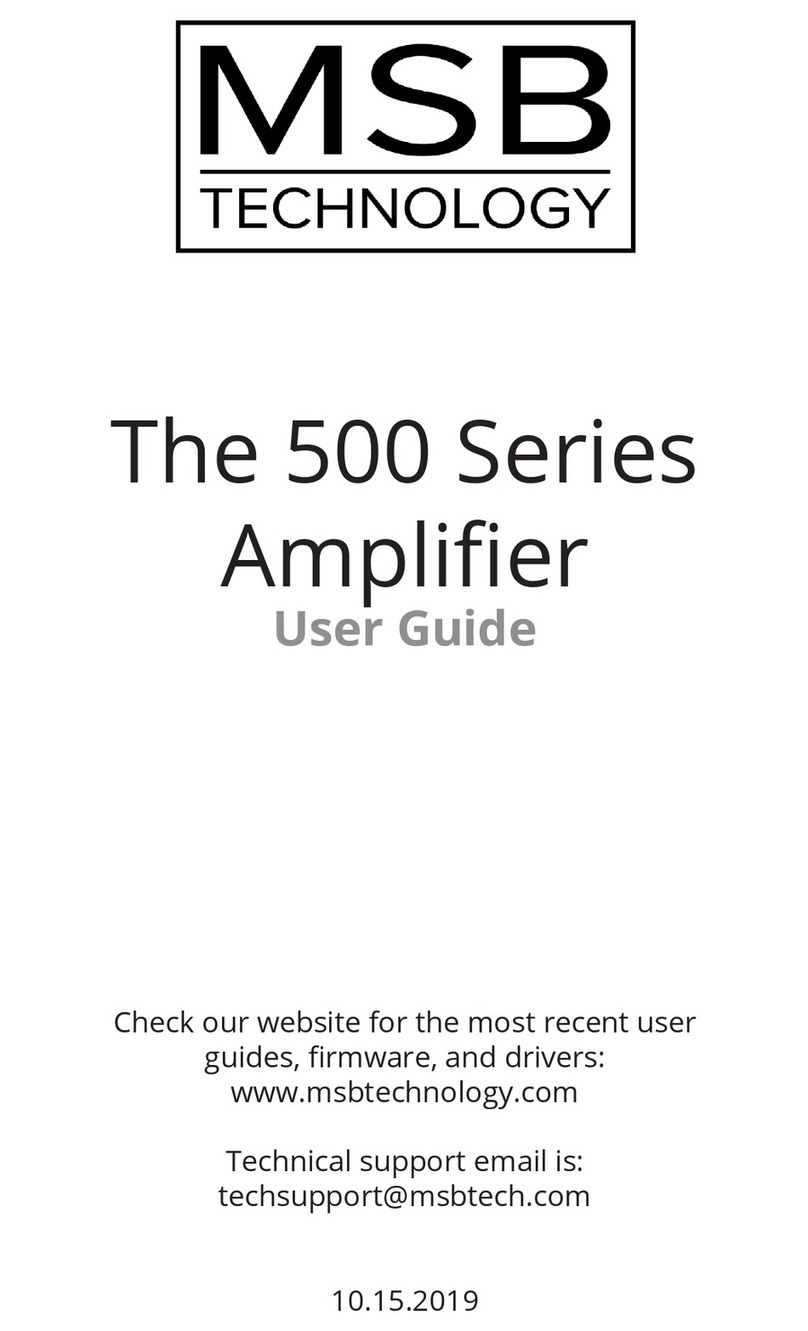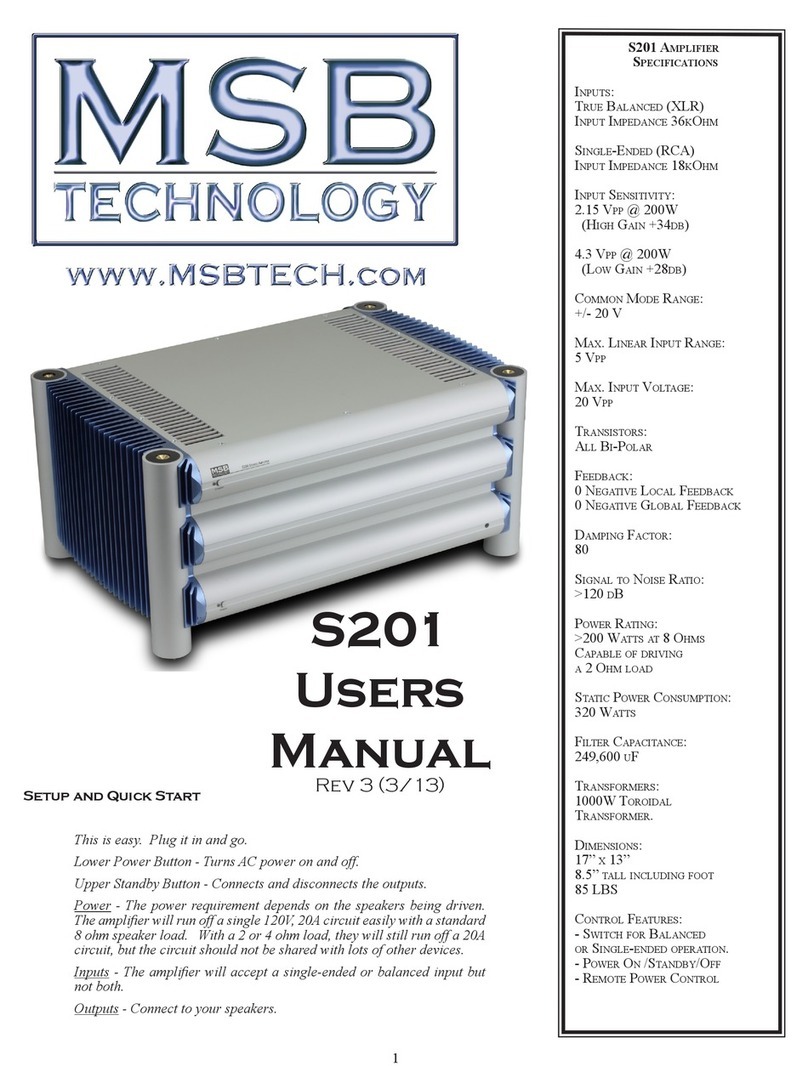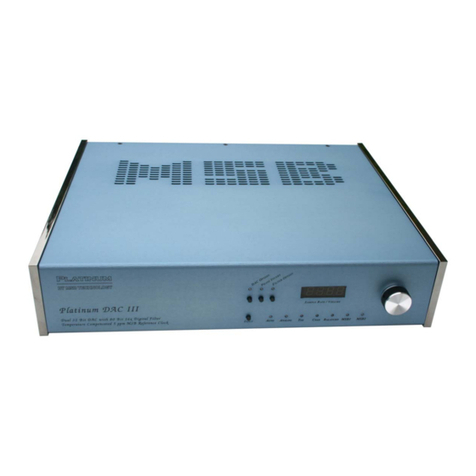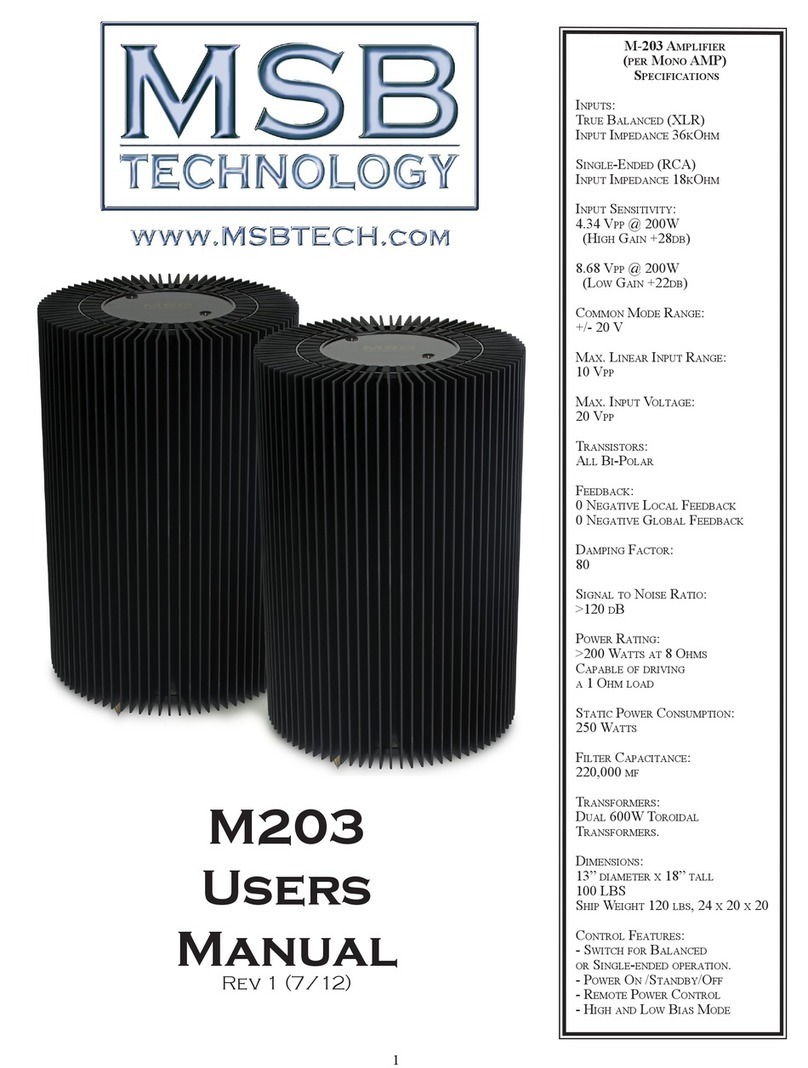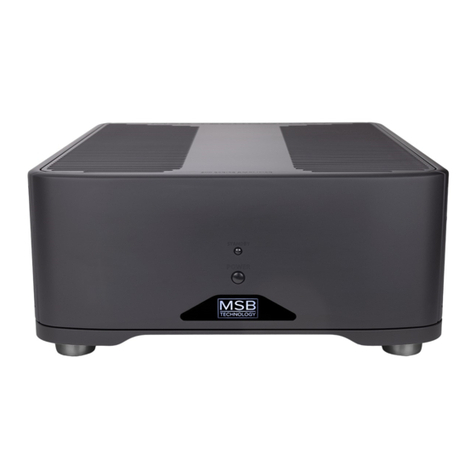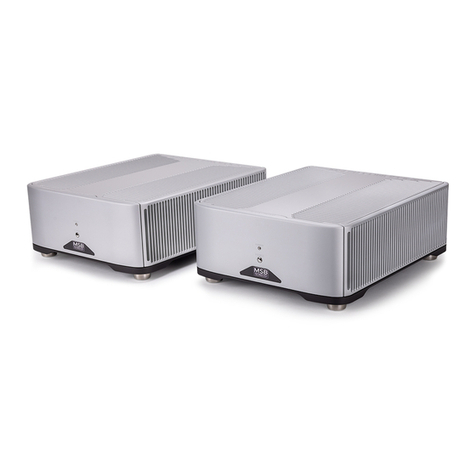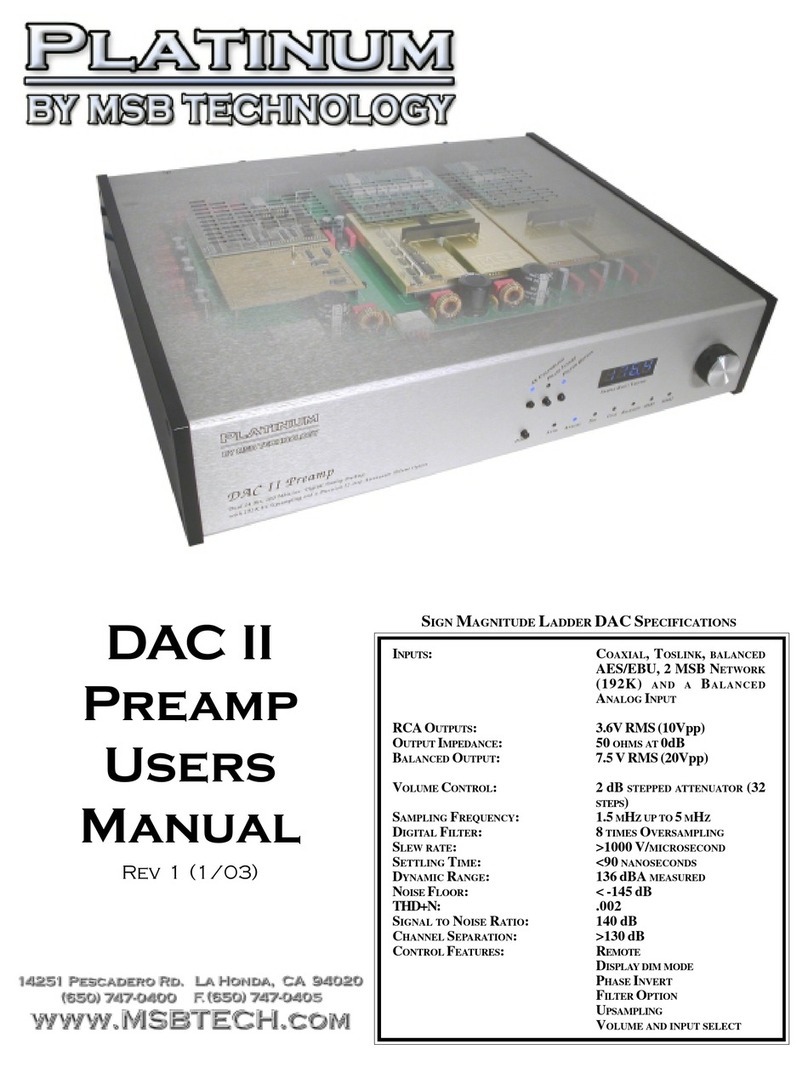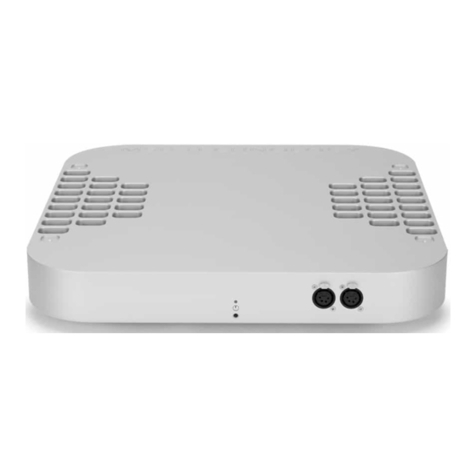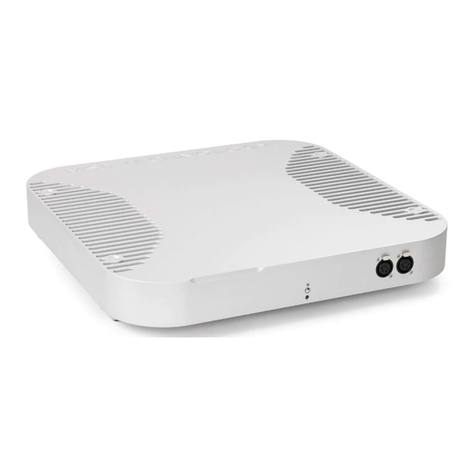
6
Special Features
The DAC IV has many special features. The following sections discuss
these features and how they work. As MSB Technology has developed,
so has our DAC architecture. Our advanced digital lter now replaces the
asynchronous upsampling of earlier models. The 32X Digital lter goes way
beyond our older 16X lter and 4X upsampling. To play a 32 bit/384 kHz
le the Platinum only needs to be plugged into the MSB Data CD IV player
and a DVD with a 32/384 .wav le needs to be played. The new reclocking
feature dynamically buffers and re-clocks all the data and clock signals to
provide a virtually jitter-free source directly to the DACs.
The menu selectable digital lters (from the optional digital lter suite)
permits the user to choose the lter design they prefer. It allows for the
selection of a standard brick-wall lter or a slow roll-off lter, both at half the
sampling frequency. Each provide a distinct, glorious listening experience.
You may favor one or the other, or enjoy changing the lter response to suit
the music you listen to. Music with less high frequencies may benet from
the slow roll-off 16x lter.
To play all kinds of media such as BluRay or SACD, your player needs to
have an MSB Network or XPORT output.
If your player does not have the MSB
Network output, it can be
added.
Upsampling
Upsampling has been in and
out of vogue for many years.
Its benet has been obvious
in one DAC and nonexistent
in another. Here is a simple
explanation of why MSB
feels upsampling is important.
Typically the most processor
intensive task in a DAC is
the digital ltering. A digital
lter takes a look at a window
of the music being played,
and because that music was
received from a digital source,
there are holes in it, between
data bytes. The lter looks at
the shape of the signal in the
window and tries to gure out
what the missing data is. The bigger the window, the better a job it does,
and the bigger processor is needed.
Well depending on the sample frequency of the incoming data, a different
digital lter is run. Each is a little different and each may not sound the
same. As a result, CDs at 16 bit and 44.1 kHz might sound better or worse
than 24 bit 96 kHz les in a particular DAC. But generally, the higher the
sampling frequency, the more processor power can be applied to look at a
bigger window and the better job the digital lter can do. So we recommend
synchronous upsampling, where the original data points are preserved, but
the spaces between them are lled in.
Custom MSB Digital Filter
The DAC IV has a custom DSP based Digital lter. The sine x function is
the ideal shape to apply to the audio lter task, but unfortunately to work
perfectly it must sample an innite number of samples. Our 16x lter
contained 3200 taps, a very large sample and worked well. The 32x Filter
contains and amazing 6000 taps, and the increased size of the lter more
closely approximates the ideal lter. Immediately you can hear the increased
clarity of the music.
MSB has applied noise shaping technology, not directly to the audio as
SACD and Delta Sigma DACs do but to the actual digital lter. This novel
approach reduces that digital harshness without loss of detail or focus.
up S a M p L i n g
ef f e C t
MSB Digital Filter History and Detail
One of our primary goals at MSB is to provide the music
lover with the most accurate musical experience possible.
During years of careful design and improvement of our
custom discrete DACs, which form the heart of your
Platinum DAC, we realized that the Platinums sound
quality was no longer limited by them. We soon narrowed
the problem to the Digital Filter which was feeding our
DACs. While the excellent Burr-Brown (Now owned by
Texas Instruments) DF1704 Digital Filter had served us
well in the past, it had became the bottleneck once we
started using our new Second Generation DAC modules.
After a thorough search of all the available off the shelf
and custom DSP based Digital Filters we realized that
little improvement could be had from any of them. With
no other option in sight we decided to build our own
solution.
Converting the ones and zeros of Digital Audio into
music is an enormously delicate and critical process.
Each individual sample that makes up the audio stream
must be converted into the high resolution, continuous
analog voltage that can be transformed into the sound
that you hear. Any misstep can corrupt the nal result
ending with audio that does not sound anything like the
original recording. Errors in translation can make a harsh,
veiled, muddy, and/or tonally colored result. Minimizing
each potential problem allows the original recording to
shine through.
Audio reproduction starts when the DAC receives the
binary coded information from the source. The rst step
requires recovering the audio samples, which represent
the nal output voltages, and the timing, which tells the
DAC when to output those voltages. Next the sample
rate is raised and the data is digitally ltered. While it is
possible to feed the DAC with the original audio samples
thereby avoiding the use of a digital lter skipping this step
has many unintended consequences.After being digitally
ltered the digital stream is feed to the DAC. The DAC
receives the digital audio samples and converts them into
a continuous analog voltage. Our DACs instantly convert
the data into a precise continuous voltage waveform with
timing determined by the DACs conversion clock.
The digital lter is necessary because mirrored image
frequencies created during the conversion process must
be removed. If the DAC did not have a digital lter, an
analog lter with an aggressive response must remove
these image frequencies. These brick wall analog lters
seriously damage the signal by corrupting the original
phase of the sound and cannot fully remove the high
frequency images. This results in harsh or rolled off high
frequencies and poor soundstage focus.
Traditional digital lter designs consist of cascaded FIR
(Finite Impulse Response) lters, each of which raise
the sample rate by two. The intermediate data between
the lters is usually stored at less than 40 bit resolution.
Since the next lter works with previously computed
data the resolution decreases with each lter pass. This
limits higher quality digital lters to a low oversampling
rate (usually 8x) before the output starts to deteriorate.
The loss in resolution is typically not apparent when
using the best conventional digital lters with standard
DAC chips, but in combination with our high resolution
DACs the problem is very apparent. The sound becomes
muddy, veiled and un-involving when using any off the
shelf digital lter. To counter this problem the MSB Digital
Filter does it’s ltering in one lter stage that raises the
sampling rate by 32.
FIR lters operate by multiplying each sample in the data
by a set of lter coefcients and then summing the result.
Most digital lters round the result of each addition before
Si g n wa V e (0 d B , 19.95 khzt e S t t o n e
SC o p e S e t t i n g S 2 V/d i V , 10 u S e C /d i V )
